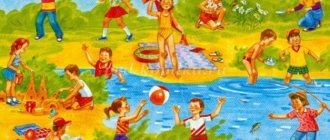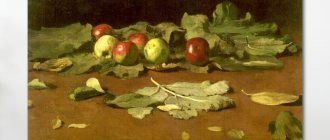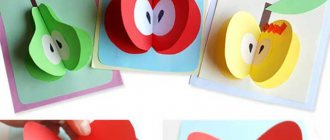QUINCE
Transcaucasia and Central Asia are considered the homeland of quince; it is in these areas that it is now found in the wild. Quinces have been grown since time immemorial, more than 4,000 years ago. The Latin name for quince is Cytfonia, presumably derived from the city of Cydon on the island of Crete; it was widely cultivated already in the first millennium BC. The ancient Greeks treated the quince with respect; for them it was a symbol of beauty and fertility. It was customary to treat newlyweds to quince. According to one version, the cause of the discord between Hera, Athena and Aphrodite was not an apple, but a quince. Currently, about 400 varieties of quince are known. They differ from each other in the structure of flowers and the shape of fruits. True, the differences between them are not as significant as, for example, between apple varieties.
Quince fruits are yellow in color with different shades, sometimes with a slight blush, very dense, hard and crunchy. If there are greenish spots on the quince, it means that it is not yet fully ripe. The pulp of this fruit is slightly viscous, tart and quite aromatic - the smell has something of an apple, and there is also a coniferous tint. You should only eat ripe quince; it is advisable to give it a chance to age. The longer it sits, the tastier, more aromatic and softer it becomes, the astringent taste disappears. Quince is a very healthy fruit. It contains potassium, magnesium, calcium, vitamin C, malic and citric acids. Quince pulp is rich in pectin. Quince is a universal fruit. It is eaten raw, it makes delicious compotes, jams, preserves, candied fruits, it can be added to porridge, salad, vegetable soup. Quince mustard is a seasoning made from quince and mustard with the addition of ginger and coriander. Quince cheese is condensed quince juice with pulp. Quince is grown in many countries of the world - in Europe, North America, North Africa, East and Central Asia. Cold-resistant varieties have also been developed and are successfully cultivated in the Volga region. Another variety of quince is Japanese quince, or chaenomeles. The flowers and fruits of this plant are similar to quince. Chaenomeles was brought to Europe from Japan at the end of the 17th century. Gradually it gained popularity among gardeners - it has very beautiful decorative flowers. Japanese quince fruits are also edible, but they are more sour.
- To the begining
- Back
- 1
- Forward
- In the end
Fruits for children - pictures for kindergarten
Preschoolers learn information well when it is presented in the form of demonstration material and at the same time commented on by the teacher.
Please note that each fruit can be printed on a separate sheet of photo paper, usually A4 office paper, or simply downloaded to a flash drive and shown on TV as a slide show. In the latter case, of course, in the preschool group there must be a TV that supports flash drives.
Each card with fruits is signed, this simplifies the teacher’s work, since he needs preliminary training in memorizing such rare fruits that may be in the demonstration material.
Of course, you may not need such a number of fruits; in this case, you can choose only those that, in the teacher’s opinion, will be most relevant for a particular lesson.
Peach
Pear
A pineapple
Kiwi
Lime
Grape
Mango
Papaya
Starfruit Watermelon Melon Banana Coconut Avocado Fig Pomegranate Lemon Mandarin Grapefruit Quince Plum Persimmon Dates Guava Mangosteen Durian Kumquat Feijoa Rambutan Kiwano Passion fruit Lychee Pitahaya Tamarillo Pamelo Pepino Grenadilla Salak Orange Apple
- Publications on the topic:
Source: https://detskiy-sad.com/frukty-dlya-detej-kartinki-dlya-detskogo-sada
APPLE
The amber apples are ripe on the apple tree. Yana and Yasha ate amber apples. (N. Lunina) Everyone knows what an apple looks like. This is not surprising. An apple is among fruits as a potato is among vegetables. Apple orchards on our planet occupy five million hectares. This is the most common fruit tree. The apple has been known to people since ancient times. There is a mention of this fruit in the Bible. It was the apple that Eve plucked from the tree of the knowledge of good and evil. Ancient Greece is considered the birthplace of the home apple tree. The ancient Greeks and Romans considered the apple a symbol of love and dedicated it to the goddess of beauty. The ancient Germans were sure that apples were the favorite fruit of the gods. They planted apple trees around their houses, hoping that the evil storm god would not throw lightning arrows at them. In Russia, apple trees began to be grown already in the 11th century. In 1051, an apple orchard was founded in the Kiev Pechersk Lavra. The first apple orchards appeared in the Moscow region in the 12th century. by order of Yuri Dolgoruky.
On August 19, Rus' celebrated the Apple Savior. Until this time, apples were not supposed to be picked. On this day, ripe fruits were collected from apple trees and blessed in churches. Apples were given to the poor and homeless. The more beggars you treat, the more abundant the harvest will be next year. Housewives baked apple pie on this day. Several hundred varieties of apples are known in Russia. They are divided into summer, autumn and winter. In the second half of September, winter varieties of apples were collected: Antonovka and Semerinka. The skin of these varieties is thick, with a special waxy coating that protects the fruit from rotting. You can store them until spring. Apples are eaten fresh, dried, soaked and frozen. They are used to prepare juices, compote, jam, jam, marmalade, and jelly. Apples are very useful. It is no coincidence that the Russian people created a fairy tale about rejuvenating apples. Eat them and you will be young and healthy. Apples contain vitamins, sugars, iron, potassium and magnesium salts. RIDDLE Same with a fist, Red barrel. If you touch it with your finger, it’s smooth, And if you bite it, it’s sweet. (Apple) PROVERBS AND SAYINGS • September smells like apple, October smells like cabbage. • No apple falls past the apple tree. • Like the tree, so are the apples.
Colored vegetables and fruits pictures for children - beautiful and funny
A cool and beautiful selection of color pictures, drawings of vegetables and fruits for children. These images are very suitable for your children as coloring or drawing, so kids can have fun and benefit themselves.
See also - Cool pictures for coloring pages for girls - print drawings
To save a picture, right- and select “Save as...”.
Source: https://tipik.ru/cvetnye-ovoshhi-i-frukty-kartinki-dlya-detej-krasivye-i-prikolnye/
Pictures of fruits and berries for children
A basket full of fruits and berries, a vase of flowers in water always delight our eyes. Even if it is just an element of a still life, we feel the fresh smell of exotic citrus fruits and the sultry aroma of summer berries. There are flowers in the water nearby, and it seems to us that summer has come again.
Our selection of pictures, cards and coloring pages will help you introduce children to fruits and berries.







